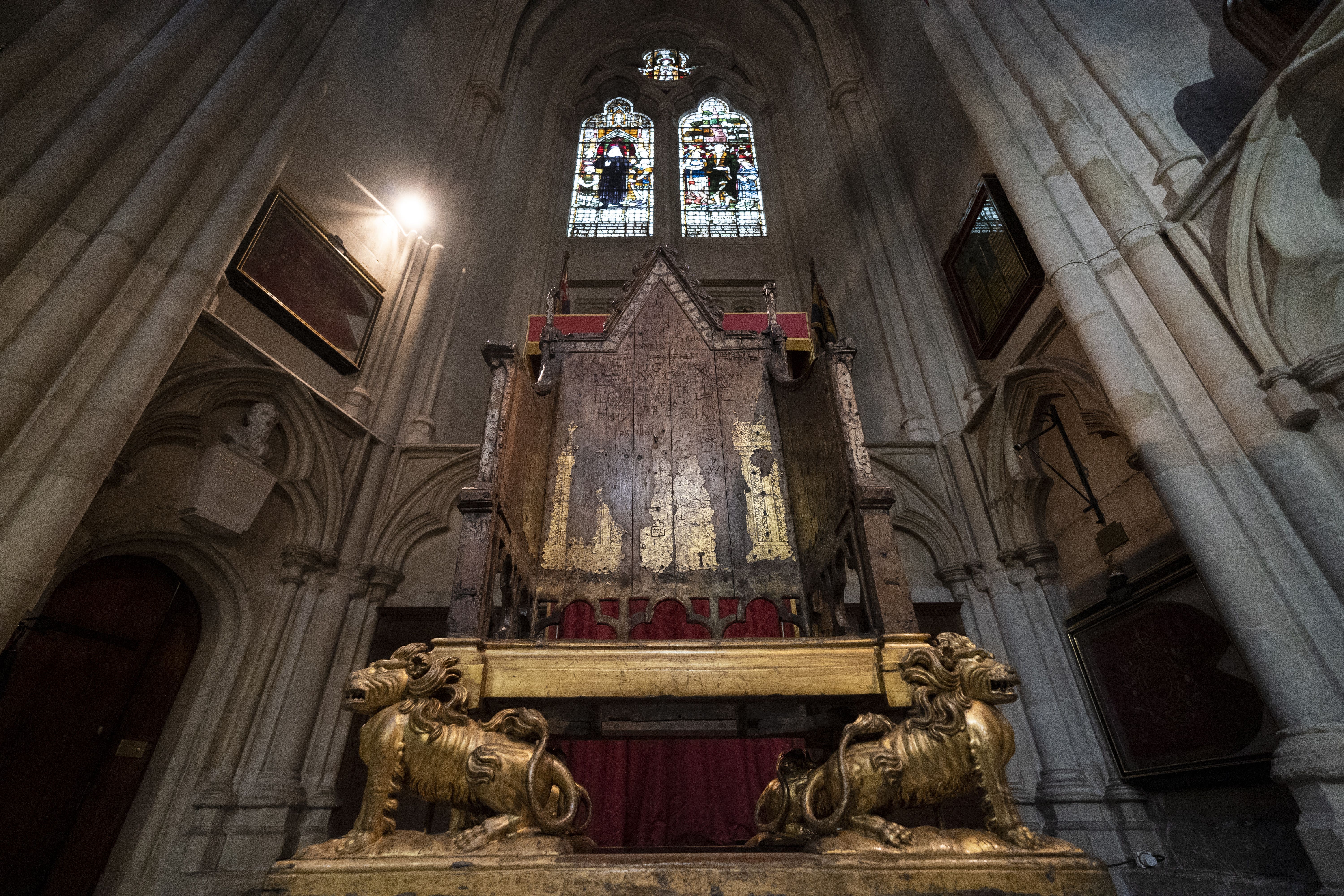New detail discovered in coronation chair decorations
The chair was made around 1300 for King Edward I to house the famous Stone of Scone.

Your support helps us to tell the story
From reproductive rights to climate change to Big Tech, The Independent is on the ground when the story is developing. Whether it's investigating the financials of Elon Musk's pro-Trump PAC or producing our latest documentary, 'The A Word', which shines a light on the American women fighting for reproductive rights, we know how important it is to parse out the facts from the messaging.
At such a critical moment in US history, we need reporters on the ground. Your donation allows us to keep sending journalists to speak to both sides of the story.
The Independent is trusted by Americans across the entire political spectrum. And unlike many other quality news outlets, we choose not to lock Americans out of our reporting and analysis with paywalls. We believe quality journalism should be available to everyone, paid for by those who can afford it.
Your support makes all the difference.The coronation chair is revealing secrets about its lavish construction 700 years after it was made following the discovery of new decoration details.
Krista Blessley, Westminster Abbey’s paintings conservator, believes she has found a previously overlooked part of a figure during work to clean and preserve gilding on the famous chair that Charles will be seated in when crowned King.
She described her pride at helping to conserve an historic object central to the life of the nation: “It’s a real privilege to work on the coronation chair.
“It’s so important to our country’s history and in the history of the monarchy, and it’s really unique as a conservator to work on something that’s part of a working collection and still used for the original function it was made for.”
Henry VIII, Charles I, Queen Victoria and the late Queen Elizabeth were all crowned in the historic chair which bears the scars of centuries of misuse, famously covered in graffiti carved by schoolboys but areas of gilding showing elaborate birds and foliage have survived.
Ms Blessley said about her findings: “I think they are previously undiscovered toes in the punch-work gilding on the back of the chair.
“So there are areas of drapery where you can tell there would have been a figure. It might be they are figures of kings or it might be a figure of a saint, because so much is lost we can’t really tell at the moment but I’ll do some further investigation.”
The chair was made around 1300 for King Edward I to house the famous Stone of Scone and was constructed from oak, decorated with coloured glass, gilded with gold leaf and painted by Master Walter, the King’s Master Painter.
Experts debate about when the chair was first used to crown a monarch, it had featured in coronation ceremonies since 1308 but the first confirmed use was to crown Henry IV in 1399.
Over the centuries 38 coronation ceremonies for reigning monarchs have been staged at Westminster Abbey with a few notable exceptions like Edward VIII, who abdicated in 1936 before his coronation.
Much of the graffiti on the inside of the chair’s back rest was carved by Westminster schoolboys and visitors to Westminster Abbey, during the 18th and 19th centuries, who left their initials or names.
One tourist carved “P. Abbott slept in this chair 5-6 July 1800” on the seat.
Slithers of wood were also cut off as souvenirs and during a 1914 bomb attack, thought to be the work of the suffragettes, a small corner was knocked off.
In 2010 there was a major project to stabilise all of the gilding on the coronation chair and clean it and there are now checks every six months.
In preparation for the coronation Ms Blessley has spent the past four months meticulously preserving the flaking gilding and cleaning the chair’s surface using sponges and cotton swabs.
She said: “It has a very complex layered structure, which means it’s very prone to the gilding on it flaking.
“So a large part of what I’ve been doing is sticking that gilding down to make sure it’s secure, and then I will surface clean it and that will improve the appearance a little bit.”
The paintings conservator added it was affected by the environment: “If there’s little changes in humidity, the wood moves, and that complex layer structure moves – new areas will lift. I might consolidate something this month, then in two months I might need to consolidate it again.”
On the back of the chair was a painted king, either Edward the Confessor or Edward I, his feet resting on a lion.
The four gilt lions that form the base were made in 1727 to replace the originals, which were not added until the early 16th century.
Ms Blessley commented on the importance of the punchwork decoration to the gilding – intricate tiny dots used to make patterns, saying: “The punchwork is unparalleled really in quality of surviving English art of this time, we have so little that has survived.
“To have something like this is amazing.”